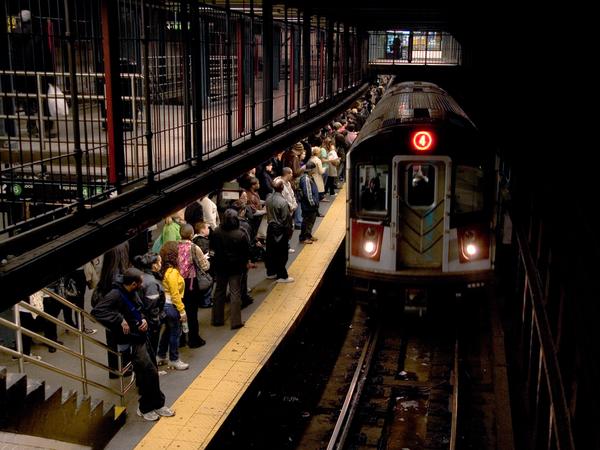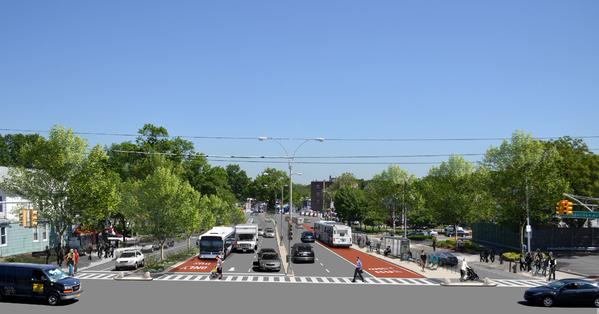Protecting Our City's Environment

CM Constantinides, the author (photo: William Alatriste)
There is probably no greater threat to our global civilization than climate change. In order to combat its effects, we must implement sustainable, environmentally responsible policies.
Our city has already made many important strides in becoming greener and more sustainable, including several over the past year and a half. There is still much work to do in the days and years ahead, and the City Council is committed to taking on the challenges we face. I am honored to have been recently appointed as Chair of the Council's Environmental Protection Committee, where I plan to continue making the city more energy efficient and environmentally sustainable.
Last year, the City Council unanimously passed my legislation to reduce carbon emissions by 80 percent by 2050, becoming the largest city to codify this goal into law. The legislation, now Local Law 66, was an integral part of the Council's policy platform to strengthen this city's commitment to a more sustainable and environmentally responsible future. By reducing our carbon emissions, we are taking the necessary and bold steps to improve our resiliency, encourage public and private sector innovation, improve our air quality, and impact public health.
To help us attain this bold sustainability goal, I have introduced additional legislation to encourage more use of solar, geothermal energy, and biofuels. These bills include INT. 609, which would create a regulatory framework for installing geothermal heat exchange systems; INT. 642, which would reduce emissions by 211,500 metric tons of carbon per year, the equivalent of taking 45,000 cars permanently off the road; and others soon to be introduced that will expand our city's wind and solar capacity.
However, we must push even further in reducing our carbon emissions and combating climate change.
To me, environmental protection means enacting policies that not only make us sustainable, but ensure environmental justice so that all communities will be respected and protected from the threats of climate change. Three-quarters of our city's carbon emissions come from buildings; additional emissions come from solid waste, transportation, and power generation. City government alone produces 3.2 million metric tons of greenhouse gas emissions annually. Reducing carbon emissions by 80 percent would require a reduction of 43 million metric tons per year.
To reach this goal, we will implement policies that raise awareness of climate change and lower reliance on fossil fuels. We will partner with the Department of Environmental Protection and Mayor's Office of Sustainability to implement Mayor de Blasio's OneNYC plan, which aims to make New York more environmentally responsible, to reduce greenhouse gas emissions, and to do much important and necessary work equitably.
Our city faces unprecedented challenges that require bold, innovative solutions. New York leads the way on housing, public health, and transportation policies, so we must continue to lead the way on long-term sustainability and resiliency. The stakes are high for our city and our planet, and continued bold policy relating to our environment will lead us to a stronger, sustainable NYC.
***
Council Member Costa Constantinides represents the New York City Council's 22nd District, which includes his native Astoria along with parts of Woodside, East Elmhurst, and Jackson Heights. He serves as the chair the City Council's Environmental Protection Committee and sits on six additional standing committees: Civil Service & Labor, Contracts, Cultural Affairs, Oversight & Investigations, Sanitation, and Transportation. For more information, visit council.nyc.gov/costa.
Six Million Reasons Albany Fails

Riders board the 4 (photo via Crain's)
As another tumultuous Albany session came to a close and our legislators bickered about rent regulations, 421-a, and mayoral control over New York City schools, there was one critical piece of the legislative puzzle conspicuously missing – funding the MTA capital program.
While the constituencies to renew expiring rent regulations (over two million) and extend mayoral control (over 1.1 million public school students) are strong, the key piece holding those two issues together are the nearly six million daily subway riders, many of whom use the system to get to school and home. They will be the people who pay the price for Albany's inaction as they suffer the impacts of train delays, overcrowding and much-needed expansion projects that won't see the light of day, like the next phase of the Second Avenue Subway.
Our subways, buses and commuter rails keep us moving and power the economy. With a physical asset value that tops $1 trillion, the MTA truly is the state's economic development catalyst. How the State could turn its back on a trillion dollar asset that carries nearly nine million riders a day is puzzling, to say the least.
Without a fully funded MTA capital program able to finance needed infrastructure repairs and improvements, several expansion projects to accommodate population growth and surging ridership will be put in jeopardy, including Penn Station access. In addition, contracts for expansion projects under the current MTA capital program may be in limbo. New train cars and station improvements will become a fantasy, not a reality. Every day our trains and buses run, they wear down a little more. If not properly maintained or replaced they break, possibly in a catastrophic way, and cause a ripple effect throughout our economy, sidelining workers, crippling businesses, hobbling neighborhoods, and shaking the very prosperity of the region - and the source of the tax revenue that supports the rest of the state.
Albany's culture of neglecting the MTA has never been more apparent as legislative leaders left town without acknowledging the existence of our region's economic lifeline - a travesty for the city, the metropolitan region, and the state. The message that Albany is sending is clear: go look for jobs and live elsewhere. So for that, we give Albany "a failing grade."
***
by Denise Richardson, Executive Director of the General Contractors Association of New York
Don't Be Fooled, Woodhaven BRT Spells Progress for Queens

Projected Queens roadways (image via NYC DOT)
Last week, an op-ed appeared on these pages in which the author, Allan Rosen, slammed the proposal for Bus Rapid Transit (BRT) along Woodhaven and Cross Bay Boulevard. Woodhaven is broken for all road users right now, and we cannot afford to stick our heads in the sand and do nothing to make it safer and more efficient for everyone.
As a member of Queens Community Board 5 and a Glendale resident, I was disappointed by Mr. Rosen's op-ed where conjecture was passed off as truth, and scaremongering was embraced in a concerted effort to stymie much needed transit improvements.
Mr. Rosen's op-ed trots out the same arguments made by the Queens Public Transit Committee, members of which advocate for the reactivation of the Rockaway Beach Rail Line. For a group that has public transit in its name, members are consistently opposed to any transit plans that mean better bus service. Rail and bus along Woodhaven are not mutually exclusive. But in the time it takes to secure the funding needed to merely start an environmental study on the rail line, BRT could be rolling up and down Woodhaven Boulevard.
Mr. Rosen, a former director of Bus Planning for MTA New York City Transit, falsely claims BRT will make Woodhaven Boulevard more congested. The BRT plan will normalize traffic patterns on Woodhaven and reduce conflicts between vehicles. A smoother flow of traffic will increase the capacity of the road.
Mr. Rosen claims safety problems along Woodhaven are "exaggerated." The numbers don't lie. According to a Tri-State Transportation Campaign study, Woodhaven Boulevard is the most dangerous street in Queens. The Boulevard is the second most dangerous road in the city. Between 2010 and 2012, eight people were killed by crashes. Mr. Rosen's claims are not supported by clear-eyed data.
I have young and elderly family members who cross Woodhaven on a daily basis. Safety for the most vulnerable road users should be more important than the perceived convenience of single occupancy vehicles. We should have a robust discussion about the best transit options for Central Queens, but for someone who doesn't live in the borough to downplay the threat posed by Woodhaven Boulevard is questionable, to say the least.
Mr. Rosen claims improvements to transit on Woodhaven Boulevard could divert Federal funding from the next phase of the Second Avenue Subway. The Federal government has supported the Second Avenue project and SBS along First and Second Avenues simultaneously. The notion bus and rail projects are exclusive is not supported by evidence. If we don't get the next phase of the Second Avenue Subway, the cause will be the massive gap in the MTA capital budget, not a DOT project in Queens.
Moreover, given the desperate need for better transportation infrastructure in Queens, it is especially inappropriate to live elsewhere and argue that Queens ought not advocate for resources in deference to Manhattan.
I have been to many DOT public workshops, and have been struck by planners' interest in hearing from people who use Woodhaven every day. I've seen changes made to the plan in response to concerns from residents, and been impressed with the thoughtfulness and thoroughness of the process.
Select Bus Service has proven to be a success in corridors across the city. DOT's plan to implement BRT service on Woodhaven will make the corridor more livable for all users - as long as the shortsighted naysayers don't get their way and condemn tens of thousands of bus riders to the harm of ever more unreliable service.
***
Toby Sheppard Bloch is a Glendale Resident and member of Queens Community Board 5.




